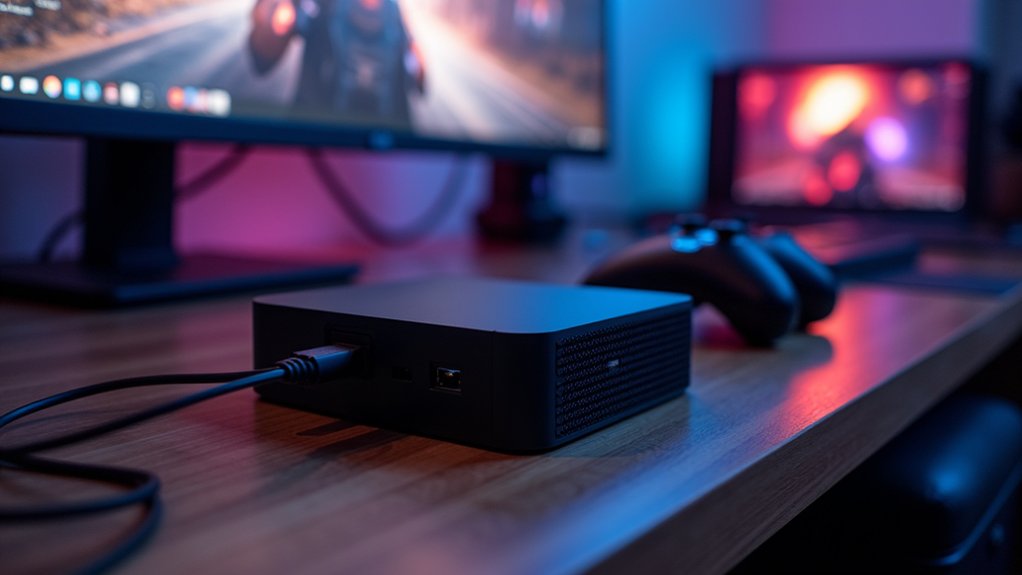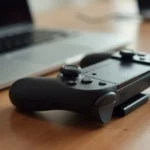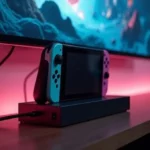
How do I add friends on Nintendo Switch
Need to add friends on Nintendo Switch? Discover simple steps and hidden tips to connect with players worldwide and enhance your gaming experience.


Optimizing a gaming console for peak performance goes beyond just plugging it in and playing. With the right maintenance, smart software updates, and strategic settings, you can enjoy smoother gameplay and extend your console’s lifespan. Start by optimizing a gaming console with regular system updates, clearing cache, and managing storage—uninstall games you don’t play and move large files to external drives. Next, fine-tune display settings for your TV, enabling features like Game Mode, VRR, and the correct resolution for your setup. Finally, improve network performance by using a wired connection or optimizing Wi-Fi, enabling QoS, and closing background apps. By consistently optimizing a gaming console, you’ll reduce lag, cut load times, and get the most from your hardware.

Preparing a gaming console for optimization starts with updating the console’s software and firmware to unlock new features, improve security, and reduce bugs.
For effective gaming console optimization, manage storage by backing up saves, uninstalling unused games, and clearing cache to keep performance smooth.
Finally, regular cleaning and hardware maintenance prevent dust buildup, overheating, and throttling—key steps in gaming console optimization for stable frame rates and a better gameplay experience.
Keeping a gaming console’s software and firmware up to date is essential for smooth gameplay, faster load times, and better stability.
Regular updates fix bugs, enhance security, and unlock new features that can improve overall gaming performance.
To update console software and firmware, connect your console to a stable internet source, head to the system settings to check for available updates, and install them promptly.
Make it a habit to update console software and firmware so your games run efficiently, stay secure online, and deliver the best possible experience.
After ensuring your console software and firmware are up to date, it’s time to backup and manage storage efficiently for your games.
First, back up important game saves using cloud services or an external drive to prevent data loss.
Next, regularly delete unused games, clear cache, and remove duplicate captures to free up space and keep performance smooth.
Finally, move less-played titles to an external drive to backup and manage storage efficiently while reserving internal space for new releases and updates.
Follow these steps to backup and manage storage efficiently and enjoy faster load times and a better gaming experience.
Regularly cleaning and maintaining the gaming console’s hardware is essential for performance.
Dust buildup in vents and fans restricts cooling efficiency, causing thermal throttling and potential crashes during intense sessions.
To maintain the gaming console’s hardware, use compressed air to remove dust from vents, gently wipe surfaces, and check fans to ensure optimal airflow.
Optimizing display, audio, and network settings is essential for a smoother gaming experience. Start by fine-tuning display, audio, and network settings like resolution, refresh rate, and HDR to boost visual clarity and reduce motion blur.
Next, adjust display, audio, and network settings on your headset or speakers—choose the correct output device, enable surround sound if supported, and balance game/chat audio for immersion.
Finally, tweak display, audio, and network settings in your router and console or PC to lower latency, prioritize gaming traffic, and ensure a stable connection for lag-free multiplayer sessions.
Adjusting display resolution and refresh rate can significantly improve your console gaming experience.
When you change the display resolution, you affect visual clarity and performance—higher resolutions look sharper but require more power, which can lower frame rates.
Tweaking the refresh rate influences smoothness and responsiveness; higher rates reduce motion blur and input lag, making games feel more fluid.
For the best gaming experience, balance display resolution and refresh rate based on your console’s hardware and your TV or monitor’s capabilities, ensuring you get great image quality and steady performance.
Configuring audio settings for immersive experience is just as important as tweaking graphics in any game.
The right audio settings for immersive experience—whether you choose stereo, 5.1, or Dolby Atmos—can boost spatial awareness and help you react faster in competitive matches.
Take time to calibrate volume levels, enable virtual surround sound, and fine-tune game-specific mixes for footsteps, dialogue, and effects.
With the proper audio settings for immersive experience, your gameplay feels richer and more realistic, complementing visuals without hurting performance.
When network reliability is critical, optimizing network settings for stable online gameplay can make a huge difference.
Use a wired Ethernet connection to minimize latency and packet loss. If you’re on Wi‑Fi, place the router close to your console or PC and reduce interference for stronger signals.
Adjust DNS and enable Quality of Service (QoS) to prioritize gaming traffic, cutting lag and stabilizing ping.
Looking for performance enhancement techniques that actually improve your gaming experience? Start by continuously monitoring system metrics to identify bottlenecks that disrupt smooth gameplay.
Effective performance enhancement techniques also include managing memory usage and closing unnecessary background applications to maintain consistent responsiveness.
Finally, apply smart graphics adjustments and use platform-specific optimizations—these performance enhancement techniques can significantly boost overall console performance.
Monitoring system performance is crucial for smooth gameplay and to quickly identify bottlenecks that hurt frame rates.
Use built-in profiling tools to track CPU, GPU, and memory usage in real time, so you can spot bottlenecks like resource-heavy processes or rendering delays.
With consistent monitoring, you can address bottlenecks early, apply targeted optimizations, and keep your games running stable and responsive.
Managing memory and background applications
Managing memory and background applications is essential for smooth gaming on any console. When you close unnecessary apps, you free up RAM and reduce lag, helping prevent crashes during games.
Keep an eye on active processes to spot resource-heavy tasks that might slow down gameplay. Efficient memory management reduces fragmentation and speeds up loading times.
Regularly restarting your console clears cached data and keeps the system responsive. For gamers, managing memory and background applications is a simple routine that boosts performance and delivers a better gaming experience.
Remember: consistently managing memory and background applications can make your games run faster and more reliably.
Optimizing memory and background processes sets the foundation for better performance in modern games, paving the way to implement graphics and platform-specific optimizations.
Developers should leverage platform APIs to maximize hardware capabilities, apply efficient rendering techniques, and optimize shaders for consistent frame rates.
To implement graphics and platform-specific optimizations effectively, tailor settings per console generation to balance visual fidelity and performance, and integrate platform features like upscaling, variable refresh rate, and low-latency modes.
If you want to get the most from your gaming setup, focus on the basics that truly matter. Regular cleaning keeps dust away and prevents overheating, which helps maximize console lifespan and gaming experience.
Keeping your system updated with the latest firmware improves stability, performance, and online features. Using external storage reduces strain on internal memory, speeding up load times and helping you maximize console lifespan and gaming experience.
Avoid constant power cycling and make sure your console has proper ventilation to minimize hardware stress during long sessions.
With these simple habits, you’ll maintain smooth performance, protect your hardware, and ultimately maximize console lifespan and gaming experience.
Optimizing a gaming console for peak performance starts with keeping your system updated. Regular software updates improve stability, fix bugs, and boost game compatibility. To optimize a gaming console for peak performance, also manage storage by removing unused games, clearing cache data, and using high-speed external drives for faster load times. Routine hardware cleaning, like dusting vents and fans, helps maintain proper cooling and prevents throttling during long sessions.
Fine-tune your display, audio, and network settings for smoother gameplay. Enable game mode on your TV, use low-latency audio options, and connect via Ethernet or a strong Wi-Fi band. Monitor system performance to spot early issues, and schedule short breaks during extended play to reduce heat buildup and prolong hardware lifespan. By following these steps to optimize a gaming console for peak performance, you’ll enjoy a smoother, more immersive, and reliable gaming experience over time.

Need to add friends on Nintendo Switch? Discover simple steps and hidden tips to connect with players worldwide and enhance your gaming experience.

Properly deleting games on Nintendo Switch frees up space and keeps your system organized; discover the simple steps to manage your library efficiently.

Master the art of charging your Nintendo Switch controller efficiently—discover essential tips and tricks to keep your gameplay uninterrupted and your device ready.

Discover the best methods to safely and efficiently charge your Nintendo Switch—avoid common mistakes that could shorten your battery’s lifespan.

Getting your Nintendo Switch on the big screen is easier than you think, but there’s one crucial step you don’t want to miss.

Unlock the world of Nintendo games by creating your own account—discover the simple steps and essential tips to get started today.